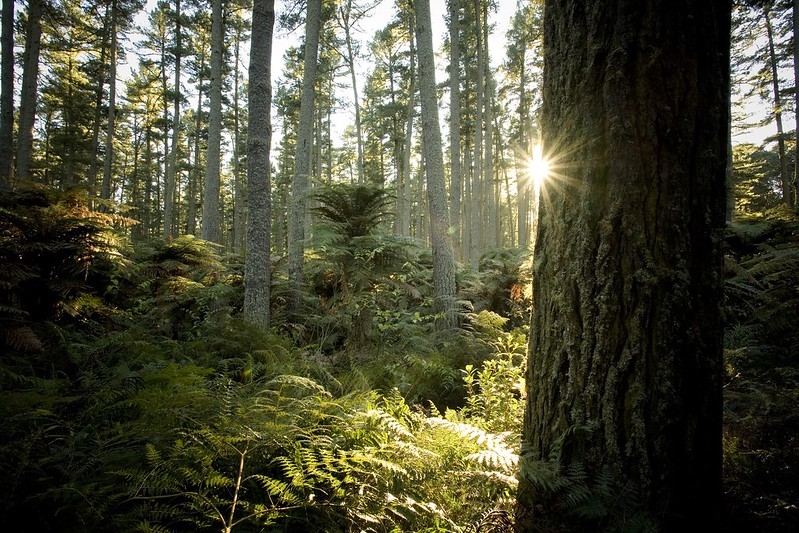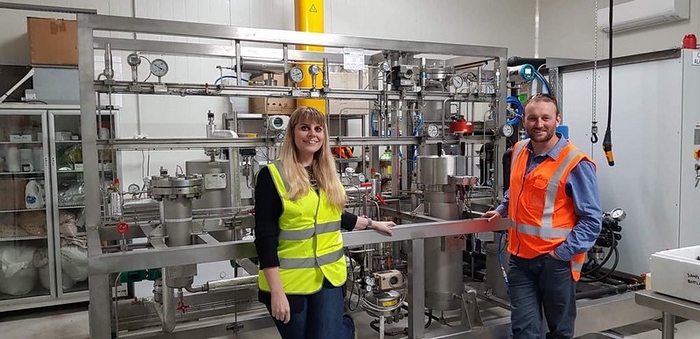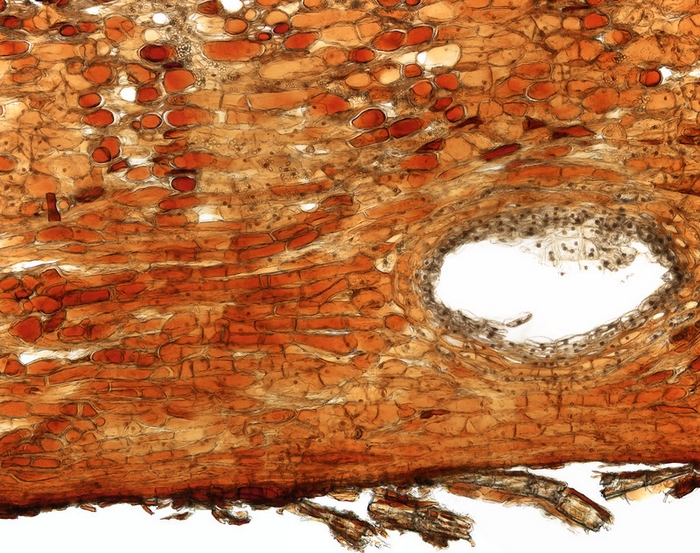Bark biorefinery progress

Around 2.4 million tonnes of bark are produced by harvesting New Zealand forests every year. The availability and recovery of bark is set to increase as more logs are debarked before being exported. How can we use this resource better?
Bark is a tree’s suit of armour, protecting the tree from infection and insects, sun and weather. It keeps the sap in and growth of delicate wood cells safe. But once a tree is harvested bark can become a liability. It needs to be removed for wood processing or pulping, or if left on logs, it can provide hidey holes for wood boring beetles on logs for export.
The compounds in bark that help protect and keep trees healthy are valuable biochemicals offering antioxidant, antibacterial, waterproofing properties and many other uses. The prospect of extracting these high value chemicals is one of the motivators behind what has become the Bark Biorefinery Project, a five-year Scion-led research programme supported by the Ministry of Business, Innovation and Employment’s Endeavour Fund.
The work started in late 2018 with Scion researchers working with local and international collaborators to develop green-chemistry methods to extract and refine the array of chemicals found in bark.

Bark-based products
Scion’s Dr Laura Raymond, working with Pharmalink in Nelson, has carried out an industrial scale extraction of pine bark. One product from this extraction trial is a mixture of soft, natural waxes much like petroleum-derived paraffin wax. Work will continue at Scion to separate and purify these natural waxes, which could be used as waterproof or water repellent surface coatings, and in cosmetics and skin care as emollients, for example. Extending this work, Dr Dawn Smith is investigating new bark-derived water-repelling (hydrophobic) polymers as sustainable alternatives for petroleum-based materials used in many products such as paper coffee cups, rainwear or touchscreen coating technology.
Project leader, Dr Warren Grigsby, says this is a great, early win by the Scion team to already be working with one of our New Zealand partners at industrial scale and to come away with such a successful trial is a bonus.
The extraction of tannins to treat leather is another avenue being explored by an analytical team led by Dr Stefan Hill and a wide range of researchers at Scion. Although tannins have been used in the leather tanning process for centuries, most processes today use chromium, which is toxic both to humans and the environment. This part of the project team has been working with New Zealand-based partners to identify and use the right tannin fraction for leather tanning, opening possibilities for producing environmentally friendly, luxury New Zealand leathers.
As part of the overall project a detailed study of compounds in pine bark is being undertaken. This ability to identify and separate chemicals across the different extracts and fractions obtained from bark is key for a successful Bark Biorefinery to produce a range of different products.
Once the extracts have been recovered and isolated from bark, the remaining bark residues retain a high energy content and could be processed into bark briquettes (bio-coal) for use as a renewable energy source. Peter Hall has been forming bark and bark residues into briquettes to give robust, energy dense products that can be easily handled and transported for use in boilers and furnaces.

Circular bioeconomy processing
The biorefinery concept stretches beyond bark. The approach can be applied to many of New Zealand’s biomass streams. Scion’s Science Leader for Biopolymers and Chemicals, Dr Florian Graichen, considers the Bark Biorefinery programme as a critical step for the transition of New Zealand to a circular bioeconomy and to meet many of the Government’s goals for an environmentally and economically sustainable future New Zealand.
